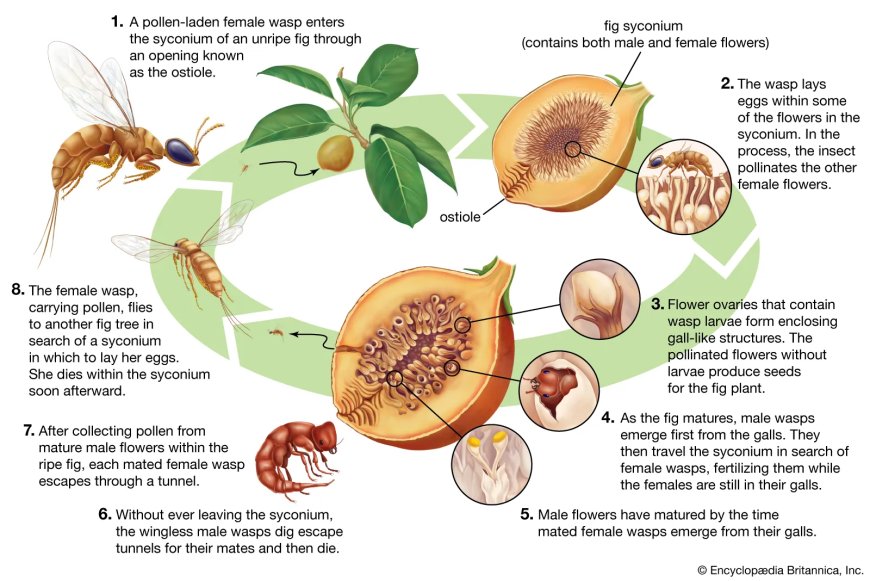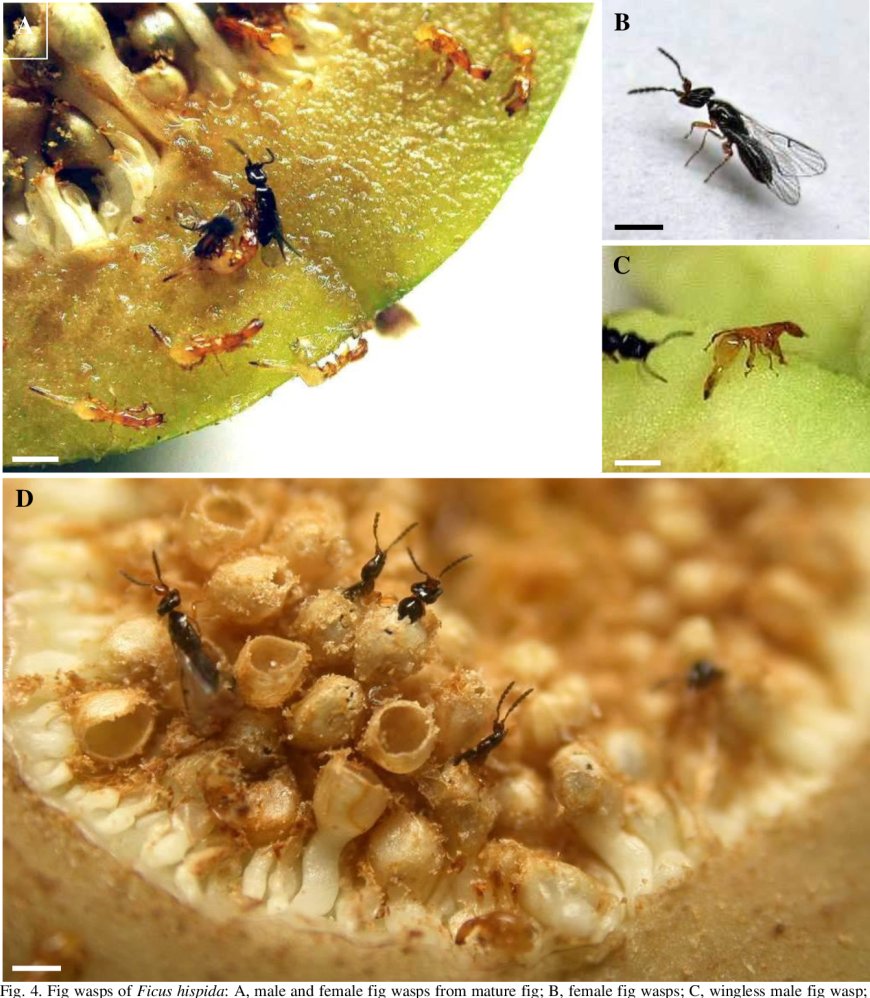Fig Wasp Life Cycle: Mutualistic Relationship with Common, Caprifig, and Mamone Fig Trees
Explore the captivating life cycle of the Fig Wasp (Blastophaga psenes) and its vital mutualistic relationship with various types of fig trees, including the common fig, caprifig, and mamone fig. Discover the intricate process of pollination, seed development, and the essential role of these tiny wasps in fig tree reproduction. The Fig Wasp, Blastophaga psenes, demonstrates an extraordinary mutualism with specific fig tree species like the common fig (Ficus carica), caprifig (Ficus carica ssp. carica), and mamone fig (Ficus carica ssp. carica 'Mamone'). This article delves into the fascinating life cycle of the Fig Wasp, highlighting its interactions with different fig trees. From pollination and egg-laying to seed development, the Fig Wasp plays a critical role in ensuring the survival of these fig species. Learn about the distinctive features of caprifigs, the parthenocarpy of mamone figs, and the interconnectedness of nature's intricate ecosystems.

The Fig Wasp, Blastophaga psenes, exhibits a highly specialized and mutualistic relationship with certain species of fig trees, particularly those within the Ficus genus. Fig wasps and fig trees have coevolved over millions of years, resulting in a fascinating symbiosis that ensures the successful reproduction of both species.
One of the most well-known and widely cultivated fig tree species is the common fig (Ficus carica). The common fig is a deciduous tree native to the Mediterranean region and has been cultivated for its delicious fruit for thousands of years. It is an essential component of many cultures' diets and is also used for medicinal purposes.
The life cycle of the Fig Wasp in relation to the common fig begins when a female wasp emerges from a mature fig. This fig serves as the wasp's nursery, providing a safe environment for her to lay eggs and nourishing the developing larvae with its tissues. The female wasp mates with one or more males within the fig, and after mating, she collects pollen from the fig's male flowers.

Using her long ovipositor, the female wasp lays her eggs inside the female flowers of the common fig, where the seeds are located. During this process, she inadvertently pollinates the flowers, facilitating the fig's fertilization. The fig's enzymes break down the female wasp's body, providing essential nutrients for the developing fig seeds.
As the Fig Wasp larvae grow, they consume some of the fig's seeds. The larvae then undergo metamorphosis inside the fig, transforming into adult wasps. Male wasps mature before females and assist the females in escaping from the fig, enabling them to carry pollen with them.

The female wasps emerge from the fig, now carrying pollen from the male flowers on their bodies. They then seek out other figs to lay their eggs, continuing the pollination process and facilitating the dispersal of fig seeds. This cycle ensures genetic diversity and the survival of the common fig species.
Another interesting type of fig tree is the caprifig (Ficus carica ssp. carica). Caprifigs play a unique role in the Fig Wasp life cycle. Unlike common figs, caprifigs produce two distinct types of figs: male and female. The male caprifigs produce male flowers that are responsible for producing pollen, whereas the female caprifigs produce only female flowers.
The life cycle of the Fig Wasp in relation to caprifigs is somewhat different from that with common figs. Female Fig Wasps enter the male caprifigs to lay their eggs, and while doing so, they inadvertently pollinate the male flowers, contributing to the fig's fertilization. The male caprifigs do not produce edible fruit, but their role in the life cycle of the Fig Wasp is crucial for the pollination process.
Mamone fig (Ficus carica ssp. carica 'Mamone') is a variety of the common fig and is known for its unique characteristic of parthenocarpy. Parthenocarpy is the ability of a plant to produce fruit without fertilization. In the case of the mamone fig, it can produce fruit without the need for pollination by the Fig Wasp.
While the mamone fig may not require pollination for fruit production, it is still capable of hosting the Fig Wasp. Female wasps can enter the fig, lay their eggs, and complete their life cycle within it. The mamone fig serves as a nursery for the Fig Wasp larvae and provides them with the necessary nutrients for development, similar to other fig tree species.
The Fig Wasp life cycle showcases an intricate and interdependent relationship between the wasp and different types of fig trees, including the common fig, caprifig, and mamone fig. This unique mutualistic bond ensures the reproduction and survival of both species and underscores the importance of preserving these fascinating ecological interactions. As we continue to study and understand these relationships, we gain valuable insights into the complexity of nature's balance and the importance of conservation efforts to protect these extraordinary ecosystems.
If you enjoyed reading this blog, be sure to download my free pdf book Grow Your Own: A Beginner's Guide to Rooting Figs.








